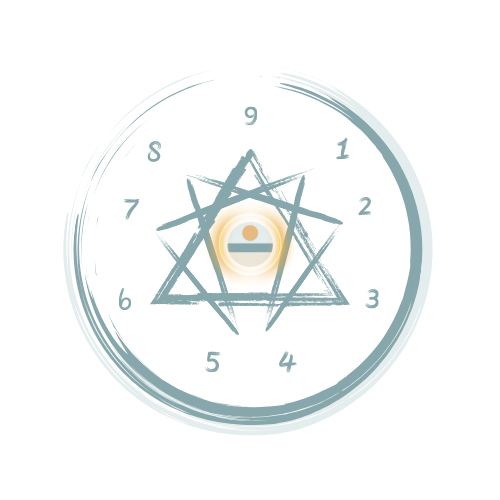The Self Beneath the Structure: IFS and the Enneagram in Holistic Therapy

There’s a deeper kind of healing emerging—one that goes beyond symptom relief or personal growth goals. It’s the kind of healing that draws us inward, toward the truth of who we are, beneath the roles, reactions, and beliefs we’ve carried for a lifetime. This is the terrain of holistic therapy, and it’s the path I walk with those who feel called to something more than just feeling "better." It’s for those who long to feel whole.
The Enneagram: A Map of Our Ego Patterns
The Enneagram is not just a personality system—it’s a living map of human consciousness. With roots in ancient spiritual traditions and modern psychology, it outlines nine distinct types, each representing a specific way we adapt to emotional wounding and disconnect from Essence, our true wise self.
The term *Enneagram* derives from the Greek *ennéa* (nine) and *gramma* (figure). Ancient mathematicians like Pythagoras and spiritual philosophers such as Plotinus articulated early foundations by exploring universal energies and metaphysical principles. Medieval contributions from figures like Ramon Llull, the Naqshbandi Sufi Order, and esoteric Judaism deepened this framework, preserving insights on human nature and spirituality. Modern developments emerged with George Gurdjieff, Oscar Ichazo, and Claudio Naranjo, significantly advancing our contemporary understanding of the Enneagram as a dynamic map of personality and spirituality.
Each of these nine types branches into 27 subtypes, shaped by instinctual drives for self-preservation, social belonging, or intimate connection. These subtypes reveal the nuanced ways we seek safety, recognition, and closeness—and the patterns we repeat, often unconsciously, in pursuit of them.
The Enneagram shows us our fixations—those well-worn grooves of thought, emotion,and behavior. But more importantly, it points us beyond them, toward the possibility of awakening.
Internal Family Systems (IFS): A Compassionate Path Inward
IFS therapy complements the Enneagram by offering a practical, compassionate way to explore our inner world. IFS teaches that we’re not a single, unified self, but a system of parts—some striving to protect us, others burdened by pain, all deserving of compassion.
- Managers try to keep us in control and prevent vulnerability.
- Firefighters spring into action when we feel overwhelmed, often through numbing or distraction.
- Exiles carry the raw, wounded emotions we’ve tried to push away.
At the core of IFS is what I call the True-Wise-Self, the expansive, steady and loving presence within us all. It mirrors the Enneagram’s concept of Essence, the unconditioned self that remains untouched by trauma or ego distortion.
Why Integrating theEnneagram and IFS Matters
By weaving the Enneagram’s deep insight into ego structure with IFS’s experiential, self-compassion based process, we gain a more holistic understanding of how our patterns were formed—and how to release them.
This integration invites us to:
- Recognize how our dominant Enneagram type and subtype shaped our inner exiles, protectors, and managers.
- Bring compassionate awareness to the parts of us still acting from old wounding
- Befriend the defenses we once needed, without letting them run the show
- Access the felt sense of Essence, the grounded, clear, and spacious Self within
Through this lens, we stop fighting ourselves. We start listening instead.
Somatic Integration: Returning to Wholeness
Holistic therapy holds space for all of it—the body, mind, emotions, relationships,and soul. It’s not about fixing who we are. It’s about reclaiming who we’ve always been.
Whether you come through the door with anxiety, trauma, perfectionism, or the quiet ache of disconnection, the work is the same: unwinding the layers of protection that obscure your essence and exploring the deeper truths held in your body.
Somatic Integration
Integrating somatic therapy into Enneagram and IFS work is essential—because transformation isn’t only cognitive. It’s experiential. Lasting change requires more than insight; it asks us to feel. This means learning to stay present with the emotions of each of our parts, as well as opening to the spaciousness and vitality of Essence—our type's essential quality.
When we engage the body through sensation, breath, and grounded awareness, we interrupt well-worn nervous system responses and invite new patterns of regulation and connection. We access the contraction of fear or shame, and the expansion of joy, compassion, and belonging.
This path is not linear. It requires courage, presence, and a willingness to touch the unknown.





